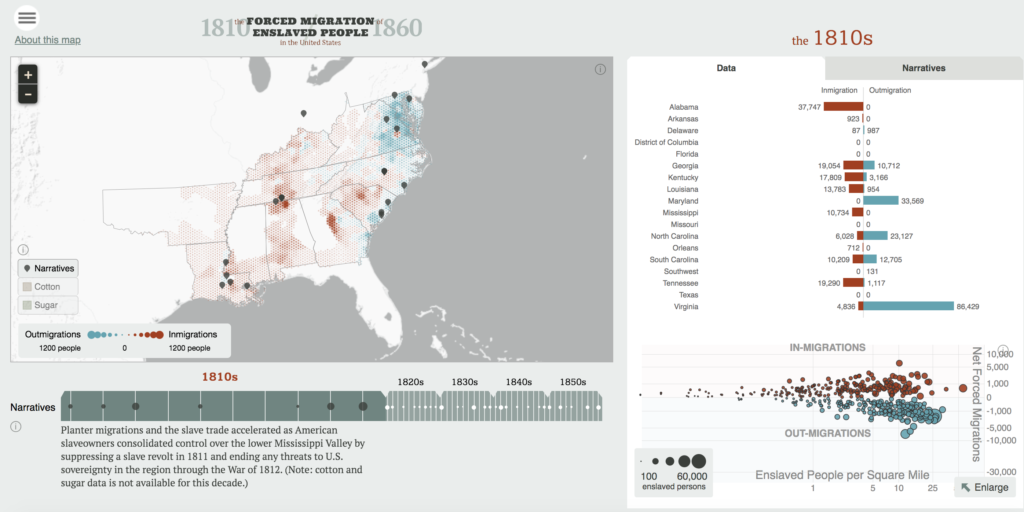
During the 19th century, enslaved people were the main forces of labor in southern United States. Among many cruel and inhumane treatment they received, enslaved people were often subjected to forced migrations, either moving with the slave owners or being traded to a new place.
Researchers from the Digital Scholarship Lab at the University of Richmond created a project, “the Forced Migration of Enslaved People in the United States“, which categorized and mapped out these forced migrations of approximately 850,000 enslaved people between 1810 and 1860.
The researchers mainly used raw data from the National Historical Geographic Information System for their source of the enslaved population across southern U.S. states and counties during that time period. This data is also available to the public on the NHGIS website.
Because the data source does not include specific information such as birthplace for the enslaved population, this project processed the data to estimate the magnitude of the forced migrations. Because international slave trade were banned in the U.S. in 1808, only domestic migration of the enslaved people occurred between 1810 and 1860. This project took the original enslaved population census data, calculated the growth rate at the time, and used this result to compare to later census data to determine the numbers of in and out migrations. Further analysis were made to more accurately divide the population changes to the county level and mapped out for a visual presentation.
The presentation of this project was displayed on their webpage, which includes a timeline over the decades, a map of the migration trends, statistical charts that showcase in-migration and out-migration across states and counties, and narratives quoted from several enslaved people during that time period.
As the authors of this website says, many of the nearly a million enslaved people were often “forcibly uprooted them from their homes, separated from their loved ones, and marched and shipped across the South on railroads and steamship”. The long-lasting impact of slavery was and is devastating to the enslaved people and their descendants, and this visually presented forced migration data reflects one aspect of the cruel racial discrimination of the U.S. history.